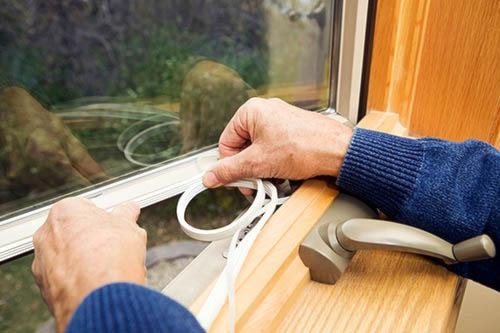By Kevin Gillies
Contributor
With the arrival of fall, it’s time to take steps to ensure your home is ready for the cold air, and, of course, the rain.
And the North Fraser region gets no shortage of that.
So fixing little problems in the fall can help prevent them from becoming expensive headaches for homeowners, while keeping your home comfortable.
Plus, a home with air leaks around windows and doors could be a costly home to heat through the fall and winter months.
Weather stripping can deteriorate over time, so it is important to inspect it every autumn to ensure it doesn’t need replacing.
Gaps in caulk and weather-stripping can account for as much as a 10 per cent of your home’s heating bills, according to energy-use experts in the U. S.
Installing, or replacing worn weather stripping is easily the most cost-effective way to keep heating costs down.
It reduces drafts and keeps your home’s temperature comfortable all year round.
There are a couple of ways to check your weather stripping’s effectiveness, beyond a visual examination.
Close the door or window on a strip of paper to see if the paper slides out easily.
If it does, your weather stripping isn’t working effectively.
You can also close the door or window and hold a lighted candle near the door or window frame to see if the flame flickers at any spot along the frame. Flickering would indicate an air leak. Be careful to keep the flame away from anything flammable.
While you’re inspecting seals around doors and windows, look for missing or damaged caulking. Also check electrical, cable, phone and gas piping entry points for damaged caulk, then seal any gaps with a suitable caulk.
When it comes to the water part of fall, homeowners would be wise to inspect their roofs before the weather gets too nasty.
Few household problems are more frustrating than a leaky roof.
Once dripping begins, it can be challenging and time consuming trying to find the source of the leak. Stopping roof-leak issues in the fall, before winter ice and winds turn them from annoyances into disasters, can be an investment in your own time and mental health.
Visually inspect your roof from top to bottom. You can use binoculars if it’s too difficult or unsafe to climb onto the roof.
Be sure to check ridge shingles for cracks and wind damage, plus look for wear or damage to metal flashing in valleys and around vents and chimneys.
Visually inspect the entire roof for shingles that are missing, curled, worn down, or damaged.
The gutters around your home can gather accumulations of shingle granules.
This is a sure a sign that your roof is losing its coating and you can likely expect problems soon.
Autumn is also a good time to look over possible damage to walkways, drives, and steps. They can become dangerous hazards that are compounded when weather turns icy.
Look for cracks that are more than an eighth of an inch wide, and uneven sections, as well as loose railings on steps.
Also look out for disintegrating asphalt, or washed-out materials on loose-fill paths.
Cracks and holes can be patched with driveway patching compounds available at local hardware retail outlets.
Also, fall is the time to ensure that outside faucets and in-ground irrigation systems don’t freeze and burst.
Close any water shut-off valves that serve outside faucets, then open the outside
Also, now is the time to clean out or replace your furnace filter. This helps clean particle out of your home’s air circulation system and maintains your furnace’s good health.
Then enjoy the last of the nice weather while you can.
Kevin Gillies is a freelance writer for Black Press.
